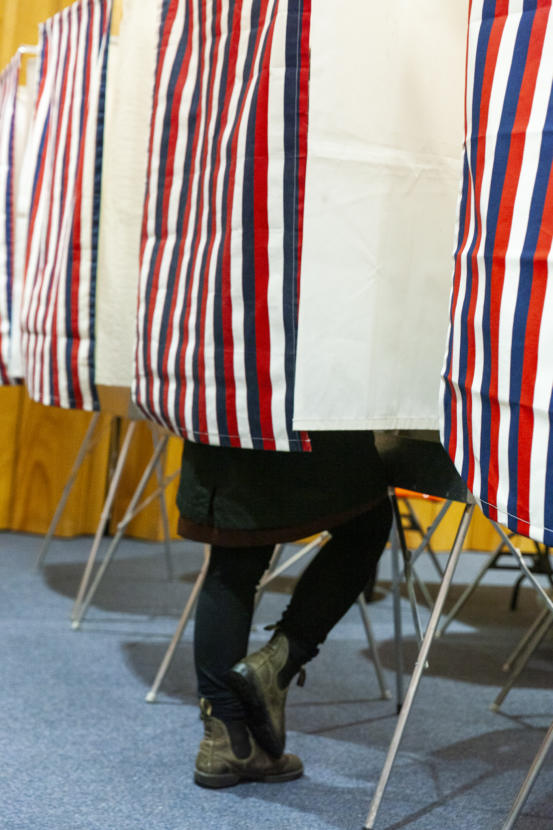
Early voting started on Monday for Alaska’s primary election. Alaska Public Media’s Casey Grove asked state government reporter Andrew Kitchenman to break down this year’s Alaska voting options.
First off, can you go over the different ways Alaskans can vote?
One is early voting. The early voting locations and hours are posted on the Alaska Division of Elections website. Division Director Gail Fenumiai said turnout has been light in early voting, so it could be a safe way to vote and avoid the line on election day.
People can also vote in person on the day of the primary election, which is Tuesday, Aug. 18.
For both early voting and in-person election day voting, the division is providing personal protective equipment to both election workers and to voters. Six-foot distances will be marked off so that voters can maintain social distancing.
Absentee voting by mail is the other option.
How do voters get an absentee ballot?
First, they have to fill out an application for one. There’s a new application available on the Division of Elections website. They can also call or visit the division offices to request an application. There are offices in Juneau, Anchorage, Fairbanks, Nome and Wasilla.
But voters have to apply soon for the primary. The division needs to receive the applications for the primary by Saturday, Aug. 8. The safest way would be to apply online. If that’s not possible, they could still try to mail it. Or they could vote early in person and apply for an absentee ballot for the Nov. 3 general election.
Is there anything else voters should know about voting by mail?
In Alaska, voters don’t need an excuse to vote by mail. They do need to have a witness for when they sign and seal the envelope. The envelope says it should be witnessed by an authorized official or, if an authorized official is not reasonably available, by someone 18 years of age or older.
Fenumiai said that with the COVID-19 pandemic, it’s reasonable to use a family member as the witness.
Voters can also drop absentee ballots off at drop boxes in Fairbanks, Soldotna, Anchorage and Wasilla.
The mail-in ballots must be postmarked by election day or earlier.
Sample ballots are available on the Division of Elections website.
There are two different primary ballots. What are they?
One is for the Republican primary. The other covers all other parties. This year, that’s the Democratic and Alaska Independence parties.
The reason why there are two is that the Republicans limit who’s eligible to vote. Only registered Republicans, as well as undeclared and nonpartisan voters, can vote in the Republican primary.
All registered voters can vote with the other ballot. But voters have to choose one or the other, either when they apply for the absentee ballot or when they vote in person.
While there is a public record that Alaskans voted and what their party affiliation is, there isn’t a record of which primary ballot they voted on.
Is there anything else voters should know about the primary?
The results might take some time this year. On election night, the unofficial results that will be posted after the polls close will only include the early voting up through the Thursday before election day and the in-person election day voting.
All absentee ballots will be cross-checked against who voted in person to ensure no one voted twice. Fenumiai said when that’s happened in the past, it’s been unintentional, such as an older voter who forgot they sent an early absentee ballot.
Absentee ballot counting will start on Aug. 25, a week after the election. And the counting will continue until the ballots are counted, which is expected to be done by Friday, Aug. 28.
This is different than the last two state elections, in 2016 and 2018, when absentee ballots were counted on election night. But it’s similar to the process used before then.
There’s a state review board that will audit the results on Aug. 31 or Sept. 1. The deadline to certify the results is Sept. 2, when the ballots are scheduled to go to the printer.
Correction: This story has been corrected to reflect the fact that vote counting is expected to be done by Aug. 28, not the voting itself, which is finished by the primary election day, Aug. 18.
